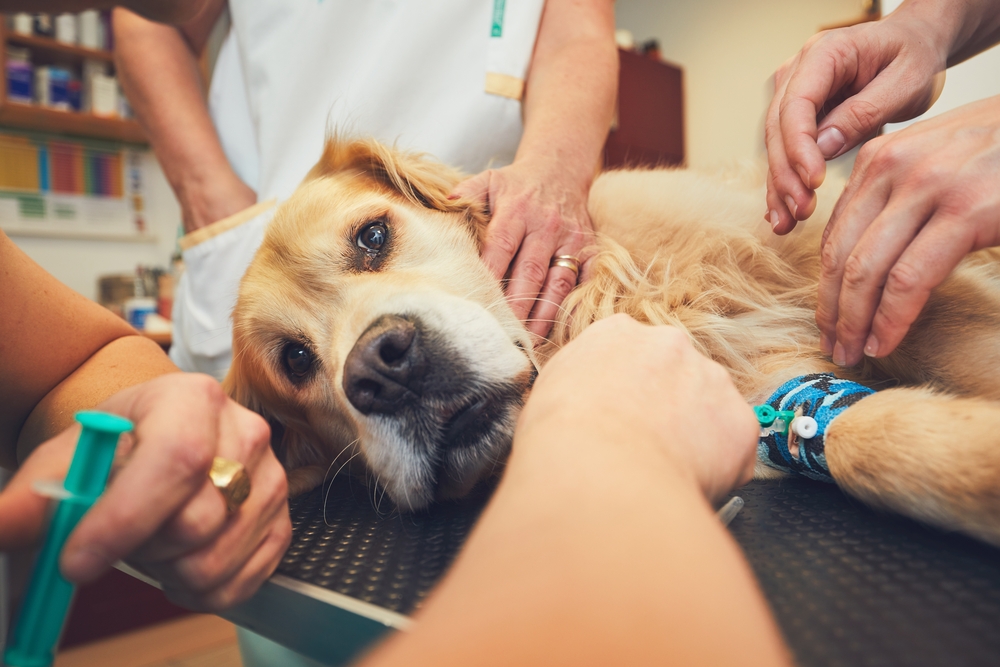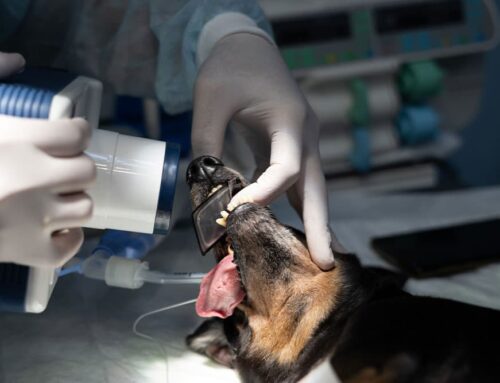When your pet is sick, or injured, you feel like you are hurt, too. During this emotional time, thinking clearly can be difficult, but knowing when to take your pet to the vet can be the difference between life and death. Learn how to recognize a veterinary emergency with this helpful South Shores Pet Clinic guide of common pet emergencies.
#1: If your pet has suffered a trauma
While an obvious trauma (e.g., hit by a car, a fall from a height, or a crash) seems a no-brainer, pets can literally walk away from serious accidents and appear perfectly normal. Unfortunately, these pets may have invisible internal injuries or bleeding that, without veterinary intervention, can result in their later death. Pets can seem normal, because of adrenaline and their instinctive need to hide pain and weakness.
All pets should be seen by a veterinarian after any major trauma, no matter their mobility, or whether they “seem” OK.
#2: If your pet is experiencing respiratory distress
Pets who are having trouble breathing will gasp, wheeze, extend their neck, breathe with their mouth open, and have increased respiratory rate and effort. Blue, purple, or grey gums and tongue suggest a pet is not getting sufficient oxygen because of pressure, airway obstruction, shock, or an injury or disease related to their lungs or diaphragm.
Prolonged lack of oxygen can cause permanent organ damage and death. If you can do so safely, check your pet’s mouth for visible obstruction, and bring them to South Shores Pet Clinic immediately.
#3: Your pet is bleeding
A small laceration that clots on its own can be wrapped in a light bandage until a scheduled appointment, but if your pet is actively bleeding, or has been punctured or deeply cut, they need veterinary care. Penetrating wounds can extend through the body wall and damage internal organs. Pets who lose a significant amount of blood may require a transfusion, to restore their red blood cells or platelets.
#4: Your pet is excessively weak, walking as if they are drunk, or seems paralyzed
Neurological injuries can result in sudden dramatic changes in your pet’s mobility. A disc between vertebrae can herniate and compress the spinal cord, while blood clots can obstruct the aorta, and cut off blood supply to the hind limbs.
Pets with neurologic impairment may be able to recover with emergency treatment or surgery, but timing is critical, to improve the odds of a positive outcome.
#5: Your pet is unable to urinate
If your cat is repeatedly straining to urinate without actually producing urine, they may have an obstructed urethra. When the urethra becomes blocked by a bladder stone or a plug formed from urinary crystals and debris, the cat is unable to urinate. Toxins then become trapped in the body, as urine is trapped in the bladder. Blocked cats require surgical removal of the obstruction to save their life. This condition is more frequent in cats, but can occur in dogs.
#6: Your pet has been attacked by a dog
You may not be able to see the extent of damage from a dog fight because of your pet’s fur. Bite wounds may not bleed, but can lead to infection and significant bruising and pain. Large dogs commonly shake cats and small-breed dogs during an attack, causing significant internal injury and spinal damage. Bring your pet to South Shores Veterinary Clinic right away for an assessment.
#7: Your pet is excessively vomiting or heaving
Repeated vomiting can rapidly result in dehydration, and prolonged bloody vomiting may also cause anemia. Your pet should be stabilized with intravenous fluids and medication until the cause can be determined.
Unproductive vomiting can be a classic sign of canine bloat, or gastric dilation volvulus. Bloat happens when the dog’s stomach fills with gas, and flips on its axis, cutting off circulation. This condition is critical, and requires life-saving emergency surgery.
#8: Your puppy or kitten is lethargic and not eating
Puppies and kittens can deteriorate rapidly because they are small, and their immune system is still developing. Lack of appetite, lethargy, and repeated vomiting or diarrhea are always concerning in young animals.
#9: Your pet has white or pale pink gums
Unless your pet’s gums are pigmented, a healthy pet should have bubble-gum pink gums. If your pet’s gums are pale pink or white, your pet’s blood is lacking red blood cells. Pigmented pets can be evaluated by their tongue color, as well as the insides of their eyelids or ears. Familiarize yourself with your pet’s normal color, so you can tell the difference. Pale pets are emergent, and may experience sudden death.
#10: Your pet has multiple seizures or a prolonged seizure

Seizures are inappropriate electrical activity inside the brain. If your pet has experienced a seizure and returned to normal, schedule an appointment for an examination and bloodwork. If your pet has had multiple seizures (i.e., cluster seizures) close together, or one prolonged seizure (i.e., grand mal) lasting more than two minutes, they should be seen right away. Uncontrollable seizures, or seizures lasting more than five minutes, can cause permanent damage.
Emergencies come in many forms. If you’re uncertain about your pet’s condition, do not hesitate to call South Shores Pet Clinic. Our trained staff can triage your pet’s status over the phone, and advise whether your pet should be seen right away, or wait for an appointment.






Leave A Comment